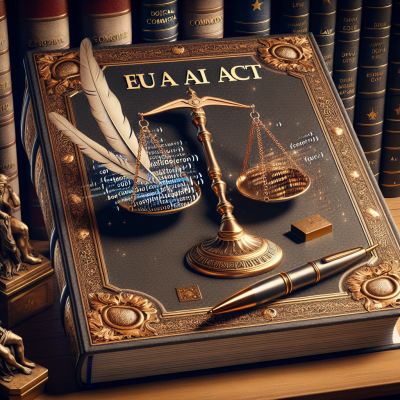
## Understanding the Latest EU AI Act Draft: Gentle Guidance for AI Model Makers
Artificial intelligence (AI) regulation is evolving rapidly, and the European Union (EU) continues to refine its approach. The latest draft of the **EU AI Act** introduces a more **nuanced and flexible** framework for **general purpose AI (GPAI)** model providers. Instead of rigid rules, lawmakers are **tiptoeing towards gentler guidance** that seeks to balance **innovation with responsibility**.
As the EU prepares to finalize **compliance guidelines by May**, let’s explore how these new provisions could shape the **AI industry** and what they mean for developers, businesses, and consumers.
—
## The Evolution of the EU AI Act: A Quick Recap
### What is the EU AI Act?
The **EU AI Act** is a groundbreaking legislative framework aiming to **regulate AI technologies based on their risk levels**. It introduces a **tiered system** that classifies AI applications from **minimal risk to unacceptable risk**, with stricter requirements for higher-risk systems.
### Why Does This New Draft Matter?
The latest draft focuses on clarifying how **GPAI model providers**—including large AI technology firms—should **adhere to regulatory requirements while fostering innovation**. The intention is to avoid **overburdening developers** with excessive compliance requirements while maintaining necessary safeguards.
Instead of imposing **rigid mandatory rules**, the draft suggests a **”code of practice”** approach to regulation. This shift acknowledges that AI is a fast-evolving field requiring adaptable governance models.
—
## Key Changes in the Latest EU AI Act Draft
### 1. **A Softer Approach to AI Governance**
The most significant shift in the latest draft is the apparent move towards **guidance rather than hard regulation**. Instead of rigid compliance demands, the proposal suggests:
– **Encouraging self-regulation** through industry best practices.
– Introducing a **voluntary code of conduct** for AI model providers.
– Supporting **collaboration between regulators and AI creators** to ensure compliance without stifling development.
### 2. **Code of Practice for AI Model Makers**
The proposal includes a **”code of practice”** that may serve as a **flexible alternative** to strict legal requirements. This approach could allow AI developers to **comply in a way that aligns with their operational models**, as long as they meet fundamental **transparency and safety** obligations.
### 3. **Maintaining Transparency Without Overbearing Restrictions**
While the framework promotes **flexibility**, it still emphasizes **transparency measures**, including:
– Clear **disclosure of AI model capabilities and limitations**.
– Labeling outputs from **AI-generated content** to prevent misinformation.
– Greater **reporting on AI-related risks and mitigations**.
This more **collaborative approach** suggests that regulators are prioritizing **engagement with industry leaders** instead of imposing one-size-fits-all restrictions.
—
## Implications for the AI Industry
### ✅ **Positive Aspects of the New Approach**
– **Encourages Innovation**: AI developers can **adapt their compliance strategies** without strict bureaucratic hurdles.
– **Prevents Overregulation**: Maintains oversight while avoiding **stifling AI advancements**.
– **Industry Collaboration**: Stakeholders can **work alongside regulators** to address concerns proactively.
### ⚠️ **Potential Challenges**
– **Subjective Compliance**: Without clear regulatory mandates, companies may **interpret guidelines differently**, leading to inconsistencies.
– **Risk of Weak Enforcement**: A softer approach might lead to **loopholes**, allowing some companies to disregard consumer protections.
Despite these challenges, the gradual approach in the latest draft suggests that regulators **acknowledge the complexity of AI development** and the need for adaptable rules.
—
## What’s Next? Finalizing the EU AI Act
### 📅 **Deadline Approaches: May 2025**
With the EU planning to **finalize these regulations by May 2025**, AI providers should stay informed and participate in ongoing discussions. The next steps include:
– Finalizing the **specific details of the code of practice**.
– Gathering **input from AI enterprises and lawmakers**.
– Establishing **a structured but dynamic compliance framework**.
—
## Final Thoughts: A Balanced Step Toward AI Regulation
The EU AI Act represents a **critical step toward responsible AI governance**, but the latest draft suggests a **more flexible, industry-friendly path**. By opting for **gentler guidance** through a **code of practice**, the EU aims to ensure **AI safety without hindering innovation**.
For AI model makers, the coming months will be crucial in shaping how these regulations take effect. Staying engaged with these evolving guidelines will be essential for **maintaining compliance and fostering trustworthy AI development**.
Are you ready for the new **EU AI Act provisions**? Let us know your thoughts on this **softer approach to AI regulation!** 🚀


Leave a Reply